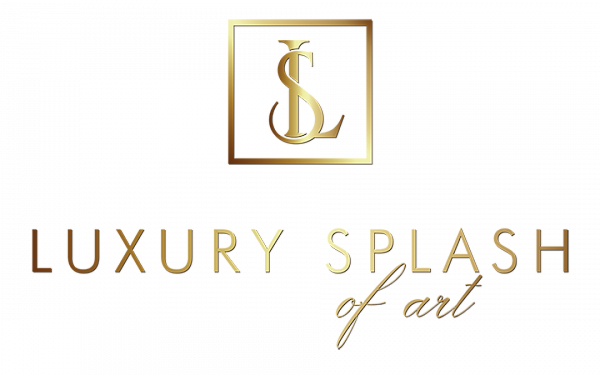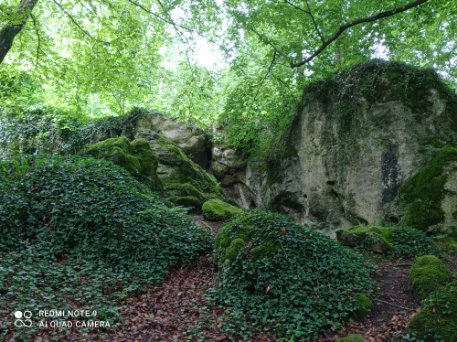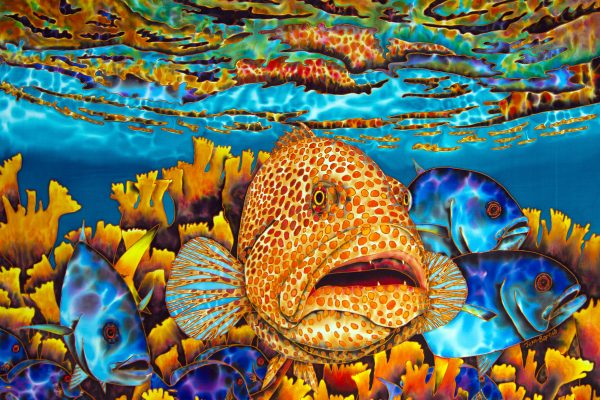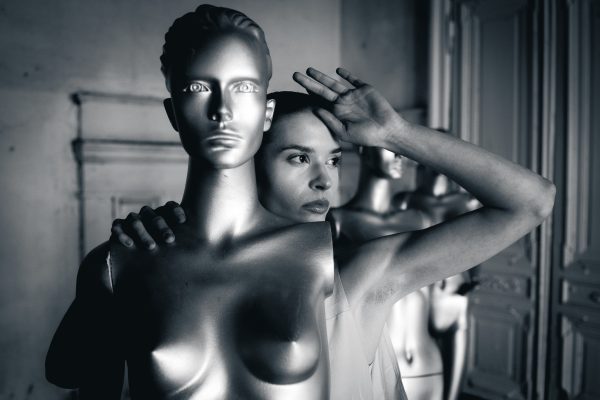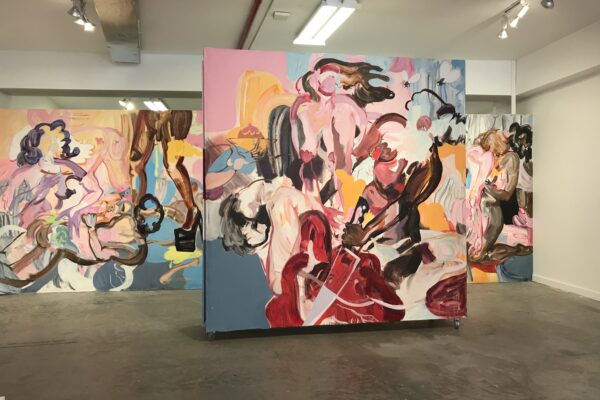It’s a city in peril. Much of its lustre is endangered, the creative spirit that gave rise to Cellini, Botticelli, and Masaccio may soon be lost forever. Now there’s no telling if the artisans that have long plied their craftsmanship in Florence, Italy will survive. They are hurting, financially and grievously due to the Pandemic. Already many artisans—leather makers, restorers of antiques, decorators of marbled paper—have been sorely traumatized, closed their shops—and with each of these upheavals, Florence’s inimitable character has suffered.

Will this Renaissance jewel on the Arno ever regain its artistic fervor and the atmosphere that made the city a unique treasure? “I’m hopeful at times, other moments just obstinate, knowing that as a child I dreamed of being a jeweler, a goldsmith, so I can’t give up. I have sacrificed too much to do my work,” reflects Cristiano Pierazzuoli, 48, a long-acclaimed jeweler who is found in the Oltrarno, Florence’s Left Bank “laboratory of ideas.” Reputed for his Folia, a bracelet laced with brown diamonds and rippling with countless leaves in 18 kt yellow gold filigree, or the Caduceo necklace, a sinuous medley of diamonds, pearls, and a finely-threaded net of hand-woven gold, he settled in this high-rent, colorful district apart from the Duomo to attract like-minded art lovers, and to help pump new life into the city’s cultural vibrancy.
Leaving Pratovecchio, a tiny village in eastern Tuscany, partly to flee the confining vision and strictures of his mother (“the Italian family is so incredibly strong”), Pierazzuoli also wanted to open a studio in 2014 where printers, sculptors and restorers of antique musical instruments “fed off each other,” felt energized by a certain Renaissance-flavored virtuosity. That vibrancy led to Florence’s enjoying 13 million visitors in 2019. In 2020, those artists faced a new daunting reality. Only 200,000 people came to the city to savor its many riches. “It’s a disaster,” says Pierazzuoli. “I came here to give birth to my vision, to realize ideas with my jewels—Florence was the perfect place. Artists here sensed they could have a rich, dynamic relationship with their surroundings. But the area became popular, rents soared, and now I am having great problems with my landlord. I might have to move, find another platform. But the Oltrarno is old Firenze, where art is the passion.”
Pausing to look approvingly at a Trilojoke, three rings in yellow gold with scores of white diamonds, he soon adds, “obstinacy can also be part of passion. I want to create, I must create. It’s very difficult now, but it’s still my release, my arrival at a better, less stressful place. There are times it’s impossible to feel I am in the clouds, to have vision. Then I must pause like a painter who can’t feel the brushstrokes. I continue though. Eventually I find the strength, the inspiration, the love for the jewels.” Such ardor, perhaps encapsulating love’s very essence, its range of emotions and psychological implications, is fiercely, even overarchingly complicated for Pierazzuoli. He suffers. He exalts. Ever struggling to find fulfillment, a satisfying balance between different facets of his work, Pierazzuoli is ensnared in his own complex, yet still uplifting passion play—a duality that propels a wide array of art.

“There’s a constant dichotomy for me, Paradise and Hell,” admits Pierazzuoli, who as a young boy in his mother’s Pratovecchio goldsmithing studio became enamored with the craft. He quickly sensed she was strikingly talented, that she possessed a remarkable deft touch with her various tools and hammers. But she was unapproachable, distant, often unwilling to discuss her passion for filigree (“It was like I was a thief,” remembering he had to cast furtive looks at her worktable). Always hoping to find approving words from her, he instead failed to measure up to her high, intimidating standards.
“She’s one of my constant (psychological) battles, our interaction is not easy, for it wasn’t easy to express myself without being swallowed up by her judgement, her never saying what I was doing was perfect.
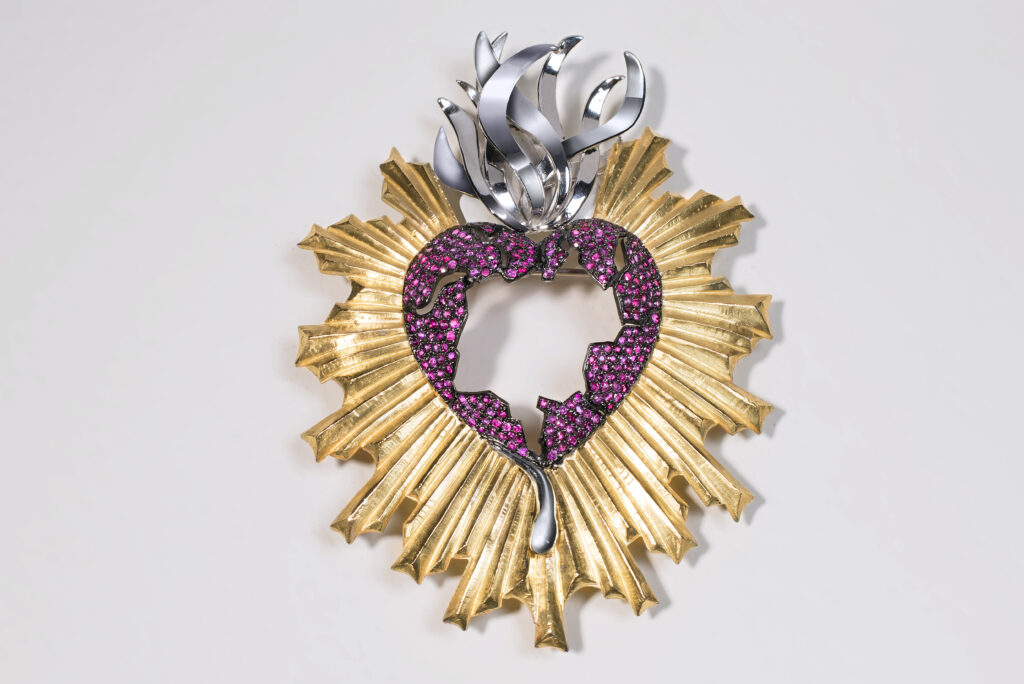
“Now I have arrived, I’m much more at peace with the past. But I’m still trying to reach higher levels of creation, particularly when I work with jewels, filigree. Filigree is my Paradise. You have to clear your mind then. That’s when I allow the jewels to express their beauty without much sculpturing, without my doing much work. It’s then impossible to constrict the jewel into a message, the jewel itself is the message. I allow them to be free.”
There are so many examples of this stirring work. His rings, which are his greatest enchantment, pieces like Undressed (when he “breaks the veil” on the beauty of the female body) or La Scelta, the Choice, with a reinvented, reconstructed huge diamond. There are also his statement-making necklaces like Ex Vuoto, and jeweled confections from the “Heaven” collection which all underscore passion and flamboyance.

Even as he admires and fondles these pieces, he talks about leaving his mother ’s intimidating “shadow,” how he could finally allow his intuition to flourish, “I don’t work with drawings, diagrams, I just allow my ideas to dominate.” During those emotional moments when reaching that Paradise, Pierazzuoli is metaphorically connected with Cellini, Florence’s vaunted goldsmith, sculptor and thinker. It’s then that he can revel “in a definite purity”— and appreciate his “most expressive work”, a large collection of specialized, often custom-made rings. Allowing his jewels to speak for themselves is certainly an epiphany of sorts, sheer ecstasy. But even in his so-called (and certainly exquisite) Hell—sculpturing and transforming humanity’s baser instincts into resplendent earrings and bracelets— he’s also experiencing profound fulfillment.

It’s then that he’s the true passionate craftsman, chiseling, hammering, “living in the real world,” searching, reflecting about everyday life, transmitting his feelings about Being, Existence, its “defects, violence, fears, sex, carnal excesses, love, and pain of the soul.” Representing life’s various corruptions and enchantments, is Pierazzuoli’s interpretation of being banished from the Garden of Eden, humanity’s being cast to Hell before finding redemption and grace. Such banishment, this “Hell,” is traditionally a loss of innocence, a darkness, but he makes this fall a shimmering flash of light.
His Ex Vuoto, a heart-shaped jewel, a dramatic example of his exploring Man’s cruel fate, is Pierazzuoli “establishing a carnal relationship with metals. I have to give the metal a new shape, show strength and violence with my hammers and chisels. I go where the metal directs me. It is a difficult communion before celebrating beauty.”

In this particular piece, he addresses the theme of faith, so he illuminates the sacred heart of Jesus, Ex Voto, then he “tears at this heart, tearing at it” as if he “wanted to scream, not only at the suffering of God for the human race but also at a godlessness in society. That’s why I played on the name of the jewel from Ex Voto to Ex Vuoto (empty). I think I represented it well. Really caught the meaning.”
Solitaire per Scelta Artless, or the Choice, epitomizes distraction. It’s another provocative creation, a ring flaunting scores of diamonds (yet only the setting is totally precious, creating a purposeful “separation”). This is meant to emphasize loss, at worse, being an orphan. Such pieces once brought him a rare distinction in Italy and elsewhere—his being commissioned by the Vatican to restore their most historic museum jewels. He loved that work. It was an “adventure, demanding, important” commissions that now prompt him to say, “What an honor! These pieces will remain in the Vatican Museum next to Cellini’s work. They were my opera, my Last Supper.”
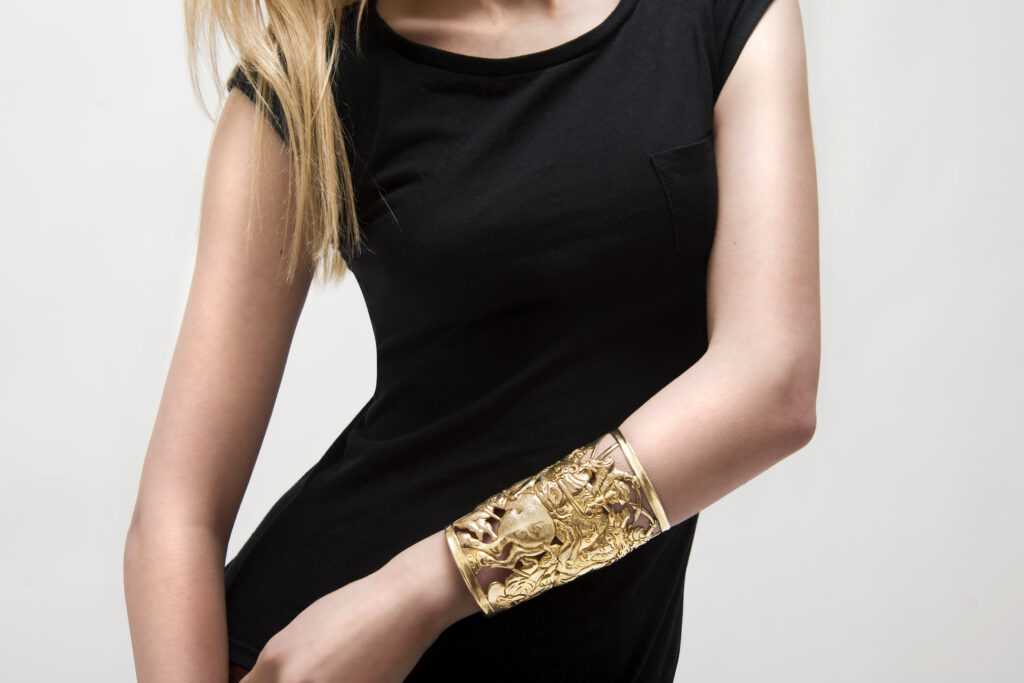
But once the Vatican decided to showcase less of its opulence in 2010, Pierazzuoli lost a great stream of income. He now teaches aspiring goldsmiths in a Florentine school to recoup some of that lost income, yet his future remains very cloudy. “Art is at severe risk here in Florence,” rues Pierazzuoli. “Too many people are troubled. Precious, wonderfully-crafted objects are not a priority right now. “Of course I wonder if Florence can survive. There is no clear trend to answer that right now. Still, part of me is hopeful. I am trying to smell the winds of change, to be able to transmit the soul I put into my work. I just need people to visit me in my studio, stay with me for an hour, to see my hands, to feel my emotions, to exchange ideas with me. That has always excited me, and it’s also the energy that makes Florence so unique.”
Article by Edward Kiersh
